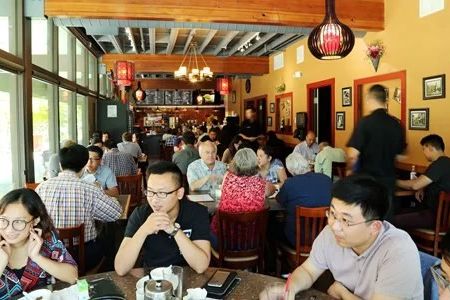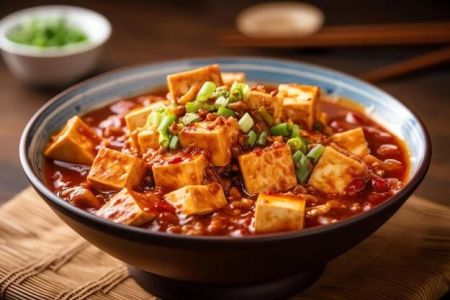- early-days-of-chinese-food-delivery
- rise-of-the-phone-call-era
- the-smartphone-revolution-and-food-apps
- chinese-food-delivery-in-the-app-era
- personal-stories-from-a-digital-transition
- how-technology-transformed-consumer-behavior
- impact-on-small-businesses-and-local-restaurants
- explore-authentic-options-at-chinese-food
1. Early Days of Chinese Food Delivery
Before technology shaped the way we interact with restaurants, Chinese food delivery was a simple, local affair. In many communities, it meant walking to a family-run restaurant or making a trip to the nearest takeout counter. These early experiences were often deeply personal. You’d know the owner by name, and the smell of freshly steamed dumplings would hit you before you even opened the door.
Back then, the concept of “delivery” was either self-service or limited to very local hand-deliveries managed with handwritten orders and cash-only transactions. It was simple, intimate, and limited—but undeniably delicious.
2. Rise of the Phone Call Era
The 1990s marked a turning point in the evolution of Chinese food delivery services. With landlines in every home, customers began ordering their favorite dishes over the phone. Suddenly, families could enjoy hot and savory Kung Pao Chicken or mapo tofu without leaving the house.
Menus were printed and slid under doorways or stuffed into mailboxes. Some popular restaurants even hired bilingual staff to help bridge the gap between native Chinese speakers and the growing Western clientele. It was during this time that the phrase “delivery in 30 minutes” became synonymous with Chinese takeout.
For many, this was their first taste of the convenience that would later define the food delivery industry.
3. The Smartphone Revolution and Food Apps
As smartphones gained dominance in the late 2000s, Chinese food delivery entered a new era. With the rise of platforms like Meituan, Ele.me, and later global players like Uber Eats and DoorDash, ordering food became a few taps away.
The biggest shift? Users could now browse hundreds of menus, read reviews, and place orders instantly without speaking to anyone. The convenience was addictive. Real-time tracking, digital payments, and algorithm-based suggestions changed how consumers made choices. And for Chinese restaurants, it was a chance to reach wider audiences beyond their neighborhoods.
4. Chinese Food Delivery in the App Era
Today, Chinese food delivery services are built around speed, customization, and data. Apps know your favorite dishes. They offer loyalty rewards, time-based deals, and even personalized dietary suggestions. Whether it’s late-night noodles or vegan dim sum, everything is available with a few swipes.
The rise of ghost kitchens—delivery-only restaurants—has added more variety. Some operate without a storefront, serving authentic Chinese food exclusively online. This trend has especially taken off in cities with high delivery demand but limited real estate.
Looking for truly authentic options? Chinese Food partners with regional chefs and curated menus to bring you handpicked dishes delivered fresh and fast.
5. Personal Stories from a Digital Transition
I remember an elderly couple in Guangzhou who ran a traditional Sichuan eatery. In 2015, their son introduced them to a delivery app. At first, they resisted—technology felt impersonal. But within six months, they had tripled their customer base. “We now cook for people we’ll never meet,” the owner laughed. “But they still taste our soul.”
Stories like this are common across China and Chinese communities globally. Small shops that once survived on local traffic now flourish thanks to delivery platforms. The transition wasn’t always easy—but it opened new doors.
6. How Technology Transformed Consumer Behavior
Technology didn’t just improve convenience—it reshaped expectations. Consumers now demand:
- Accurate delivery estimates
- Photos and detailed descriptions of dishes
- Cashless payments and loyalty points
- Fast resolution of complaints
For Chinese food delivery services, this meant modernizing operations. Kitchens became more efficient. Packaging was upgraded to preserve texture and temperature. And customer feedback, once rarely gathered, became central to business growth.
7. Impact on Small Businesses and Local Restaurants
Not every change has been easy. The commission fees from third-party apps can be high, squeezing profit margins. But for many small Chinese restaurants, the digital shift is a lifeline, especially during times like the COVID-19 pandemic.
Several restaurants have adopted hybrid models—using apps for reach but encouraging direct orders through their websites. Others collaborate with platforms like Chinese Food, where they gain visibility and fairer rates.
Ultimately, food delivery apps have pushed Chinese restaurants to innovate, digitize, and cater to evolving customer needs.
8. Explore Authentic Options at Chinese Food
From handwritten notes to AI-driven delivery algorithms, Chinese food delivery has come a long way. Yet, one thing remains unchanged—the comfort of a warm meal that reminds you of home.
Whether you're craving hometown favorites or discovering regional specialties for the first time, Chinese Food offers an expertly selected range of dishes, restaurants, and services tailored to your taste and convenience. Join thousands of satisfied diners exploring the past, present, and future of Chinese cuisine—all from the comfort of their home.







